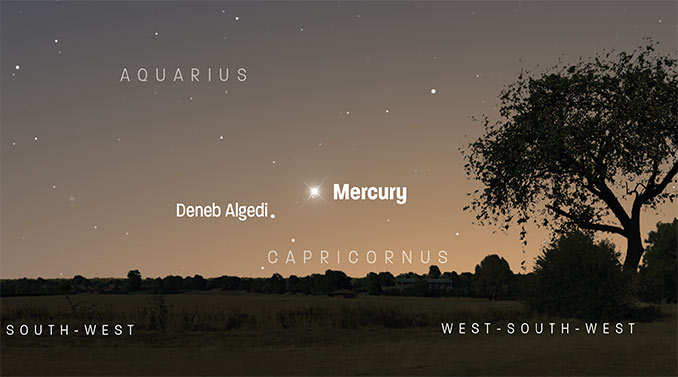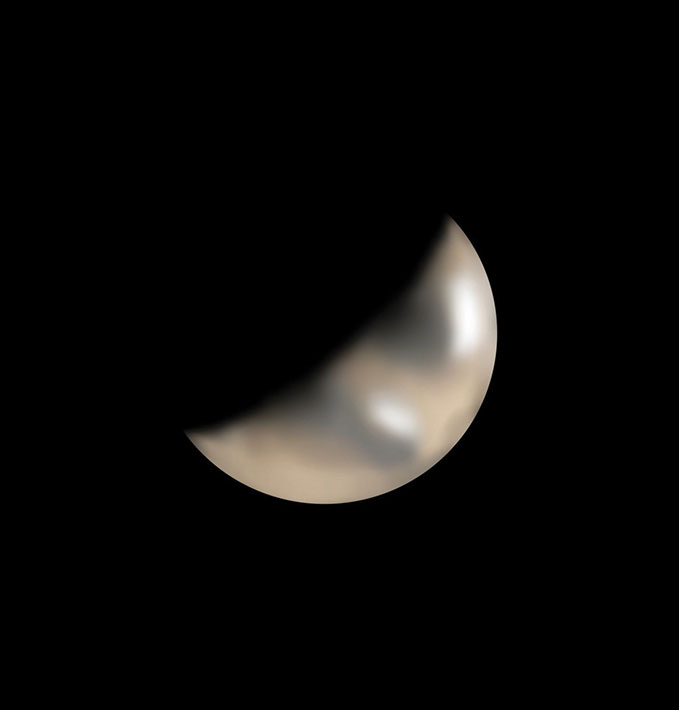
Mercury is visible this evening soon after sunset, having reached greatest elongation east (18.6 degrees) from the Sun. Although this is not the innermost planet’s most favourable evening apparition during 2021 – we’ll have to wait until May for that – the planet puts on quite a good showing in the south-western sky. (Mercury’s best morning apparition of the year for the UK takes place in October.) Mercury never strays too far from the Sun’s domain, so there’s a good sense of accomplishment when you are able to track it down.
As at every favourable evening apparition of Mercury, you’ll need to track down an observing site with a reasonably unobstructed view towards the south-west. Mercury can be found at an altitude of around 13 degrees above the horizon at sunset from London (which occurs at about 4.35pm GMT), and shines at a relatively bright magnitude –0.5. Remember, don’t sweep the sunset horizon (or indeed at sunrise) with binoculars or a telescope until you are absolutely sure that the Sun has set from your location.

In a transparent sky you should spot Mercury; if you can view right down to the horizon, don’t mistake Mercury for brighter Jupiter, which lies five degrees below. A pair of 10×50 binoculars should easily snare Mercury, though it appears merely as an off-white star. If you are able to view the planet through a telescope, then it will show a 52.7 per cent-illuminated disc, like the Moon at just past first quarter. Mercury remains on show for the rest of the month, fading to magnitude +1.0 by the end of January, as it looses a couple of degrees in altitude for the same degree of twilight.
